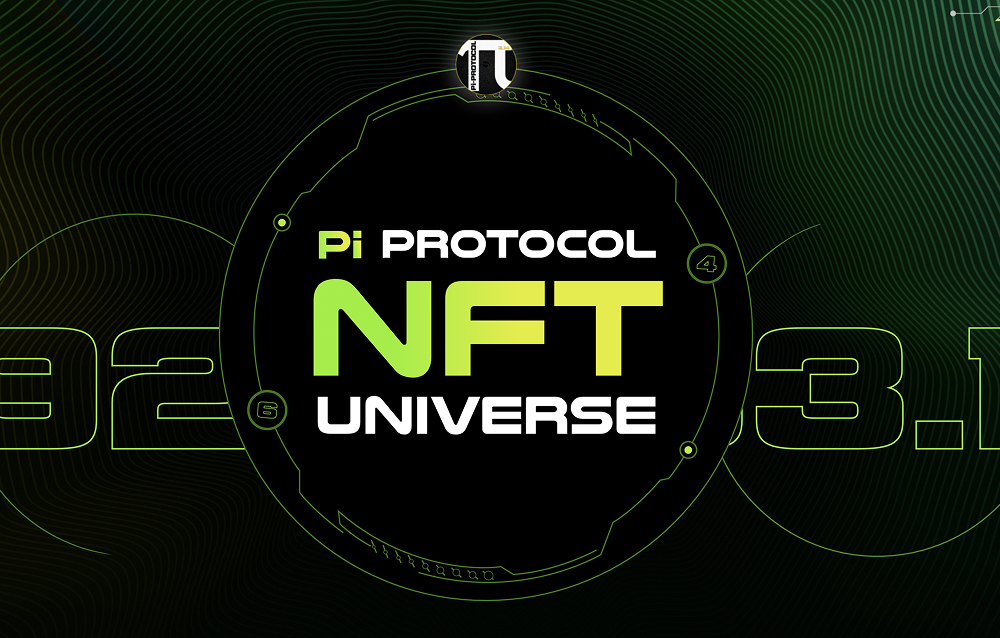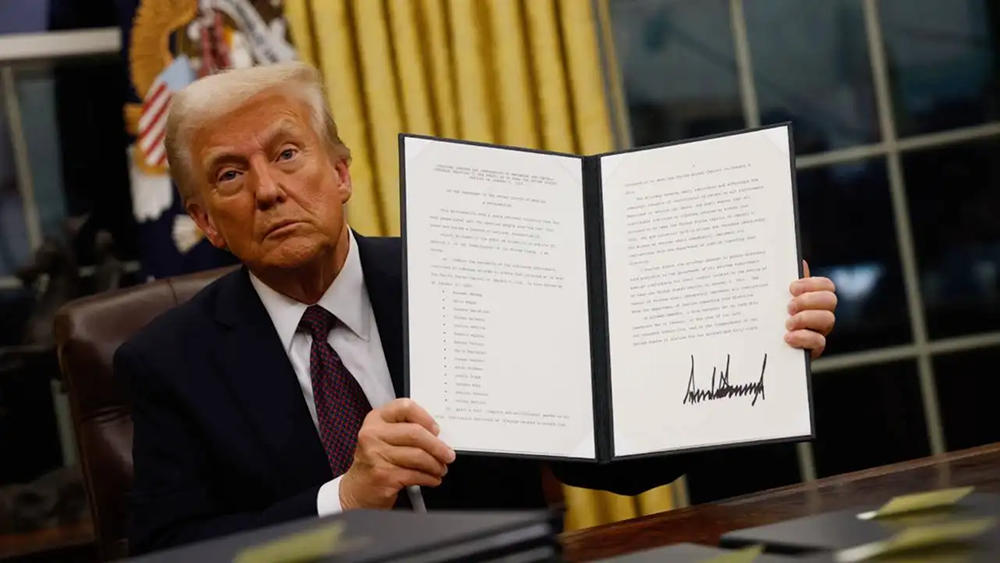As the influence of cryptocurrencies continues to expand in the global economy, stablecoins, serving as a key bridge between digital assets and traditional finance, are ushering in a new wave of innovation and integration.
Recently, Reeve Collins, co-founder of Tether, announced plans to launch an "interest-bearing stablecoin" based on Ethereum and Solana in the second half of 2025. This project not only provides users with returns but also maintains a 1:1 peg with the US dollar, seen as a significant signal of further integration between cryptocurrencies and traditional finance. Meanwhile, the pro-crypto policies of U.S. President Donald Trump are driving American financial institutions to explore the possibilities of digital assets, including issuing stablecoins and providing crypto custody services. Under this dual impetus, the stablecoin market may enter a new stage of development.
Reeve Collins' New Attempt: Pi Protocol
Reeve Collins is one of the three co-founders of Tether (USDT) and served as its CEO from 2013 to 2015 before selling the company to Bitfinex's operator. Now, he returns to the stablecoin space with a new project, Pi Protocol. According to industry sources, Pi Protocol plans to launch on the two mainstream public chains, Ethereum and Solana, in the second half of this year. The standout feature of this new stablecoin is its "interest-bearing" characteristic—holders can enjoy price stability while also earning returns similar to traditional financial interest.

Specifically, Pi Protocol may achieve this goal by tokenizing real-world assets (RWAs), such as passing on the yields from U.S. Treasury bonds or highly liquid bonds to stablecoin holders. This model is not entirely new; similar projects like Ethena's USDe (which offers about 10% annualized returns through a staking mechanism) and Mountain Protocol's USDM (which provides about 5% returns based on Treasury bonds) have already emerged in the market. However, Collins' new project aims to further optimize user experience and cost efficiency by leveraging Ethereum's smart contract ecosystem and Solana's high-performance advantages. Ethereum provides a mature decentralized finance (DeFi) infrastructure, while Solana attracts large-scale adoption with low transaction fees and high throughput.
Compared to Tether's current flagship product, USDT, the biggest difference of Pi Protocol lies in profit distribution. USDT, as the dominant stablecoin with a market capitalization exceeding $140 billion (accounting for about 63% market share, data source: DeFiLlama), has all interest income from its reserve assets (such as U.S. Treasury bonds) going to Tether, with ordinary holders unable to share in the profits. In contrast, Pi Protocol seeks to break this model by returning profits directly to users, attracting yield-sensitive investors. This innovation could have a profound impact on the competitive landscape of the stablecoin market.

Deep Integration of Stablecoins and Traditional Finance
The launch of Pi Protocol is not only a technological breakthrough but also reflects the macro trend of integration between stablecoins and traditional finance. Since their inception, the primary function of stablecoins has been to provide a price-stable medium of exchange and a store of value for the crypto market. However, as market demands evolve, stablecoins are transitioning from being mere "digital dollars" to more complex financial products. The emergence of interest-bearing stablecoins expands their functionality into areas similar to bank deposits or money market funds, allowing users to earn returns while maintaining asset liquidity.
The core of this integration lies in the tokenization of real-world assets. Through blockchain technology, low-risk assets in traditional finance (such as Treasury bonds and bonds) are transformed into digital tokens, with their yields distributed to holders via smart contracts. This model not only enhances capital efficiency but also provides a low-barrier entry for traditional finance users into the crypto market. A recent report from ARK Invest indicates that stablecoin transaction volumes reached $15.6 trillion in 2024, surpassing the combined totals of Visa and Mastercard, highlighting their immense potential in payments and remittances. The addition of interest-bearing stablecoins may further accelerate this trend, pushing stablecoins from being internal tools of the crypto economy to becoming an important part of the global financial system.
From a broader perspective, this integration is blurring the lines between cryptocurrencies and traditional finance. Traditional financial institutions like BlackRock have ventured into the tokenized asset space through BUIDL funds, while projects like Pi Protocol are initiating reverse penetration from the crypto-native end. Together, they are driving the emergence of a new hybrid financial ecosystem, with stablecoins playing a bridging role between the real economy and the digital economy.
Trump's Policies Propel Financial Institutions to Enter the Market
At the same time, the shift in U.S. government policy provides external support for the integration of stablecoins and traditional finance. After Donald Trump officially took office on January 20, 2025, he quickly fulfilled his campaign promises by promoting pro-crypto policies. On January 25, he signed an executive order explicitly supporting the development of "legitimate and dollar-pegged stablecoins," aiming to maintain the global dominance of the dollar while prohibiting the advancement of central bank digital currencies (CBDCs). Additionally, he proposed establishing a national digital asset reserve, utilizing cryptocurrencies seized by law enforcement as initial capital. This reserve plan could facilitate the circulation of stablecoins, further strengthening their strategic position.

Trump's policies have significantly incentivized U.S. financial institutions. Previously, due to the strict regulatory environment during the Biden administration (such as the SEC's "dealer rules"), banks and traditional financial institutions were cautious in exploring digital assets. However, the new government's lenient stance has opened doors for financial institutions. For instance, large banks may be encouraged to issue their own stablecoins or provide crypto custody services to capture this rapidly growing market. Institutions like JPMorgan and Goldman Sachs have previously experimented with blockchain technology, and Trump's policies may prompt them to accelerate their strategies.
Specifically for Pi Protocol, this policy environment is undoubtedly favorable. The promotion of dollar-pegged stablecoins aligns closely with Collins' project goals, and regulatory leniency will reduce compliance costs for the new stablecoin, accelerating its marketization process. If the national digital asset reserve plan is implemented, stablecoins could become a link between government assets and public investments, further enhancing their adoption rate.
Potential Impacts and Challenges
The launch of Pi Protocol and the trends behind it could have profound impacts on multiple levels. First, for users, interest-bearing stablecoins combine stability and yield, potentially attracting traditional finance users into the crypto market, especially those seeking low-risk investments. However, the expected yield levels (projected to be between 4%-10%, referencing similar projects) will need to compete with market interest rates, and whether they can be sustained long-term remains to be seen.
Secondly, market competition will intensify. Tether and Circle (USDC) dominate the stablecoin market, while Ethena's USDe has also established a foothold in the yield-bearing space due to its high returns. If Pi Protocol wants to break through, it must establish advantages in technological innovation and user trust. Additionally, while Ethereum and Solana are technologically advanced, they also carry their own risks, such as Ethereum's high gas fees and Solana's history of network outages, which could affect user experience.
Regulatory aspects are also a key variable. Although Trump's policies have loosened restrictions for the industry, the U.S. Securities and Exchange Commission (SEC) has not fully relaxed its scrutiny of crypto products. If interest-bearing stablecoins are deemed unregistered securities, they may face litigation risks similar to other projects (like Ripple). Collins' project needs to prepare for transparency (such as reserve proof) and compliance.

Future Outlook: Evolution of the Financial System
From a macro perspective, the combination of Pi Protocol and Trump's policies signals a deepening trend of integration between stablecoins and traditional finance. Stablecoins are evolving from transactional tools to yield-generating instruments, potentially driving more institutions and retail investors to adopt blockchain technology. Experts from the International Monetary Fund (IMF) point out that the proliferation of dollar-pegged stablecoins may reinforce rather than challenge the dollar's hegemony, especially against the backdrop of surging demand for digital dollars in emerging markets (such as Turkey and Brazil).
In the long term, if Pi Protocol succeeds, it could become a new paradigm in the stablecoin market, prompting more projects to follow suit. However, this integration may also trigger a re-examination by regulatory bodies, especially when coordinating regulatory frameworks globally. Regardless, stablecoins are reshaping the boundaries of the financial system, and 2025 may be a key juncture in this transformation.
Reeve Collins' plan for an interest-bearing stablecoin, Pi Protocol, combined with the pro-crypto policies of the Trump administration, marks a new phase in the integration of stablecoins and traditional finance. This trend is not only an innovative attempt in the stablecoin market but may also serve as a forward-looking signal for the evolution of the future financial system. Driven by technology, market dynamics, and policy, stablecoins are moving from the periphery to the center, becoming a link between the digital and real economies. However, their success will still require time and market validation.
Disclaimer: The above content does not constitute investment advice.
AiCoin Official Website: www.aicoin.com
Telegram: t.me/aicoincn
Twitter: x.com/AiCoinzh
Email: support@aicoin.com
Group Chat: Customer Service Yingying、Customer Service KK
免责声明:本文章仅代表作者个人观点,不代表本平台的立场和观点。本文章仅供信息分享,不构成对任何人的任何投资建议。用户与作者之间的任何争议,与本平台无关。如网页中刊载的文章或图片涉及侵权,请提供相关的权利证明和身份证明发送邮件到support@aicoin.com,本平台相关工作人员将会进行核查。




